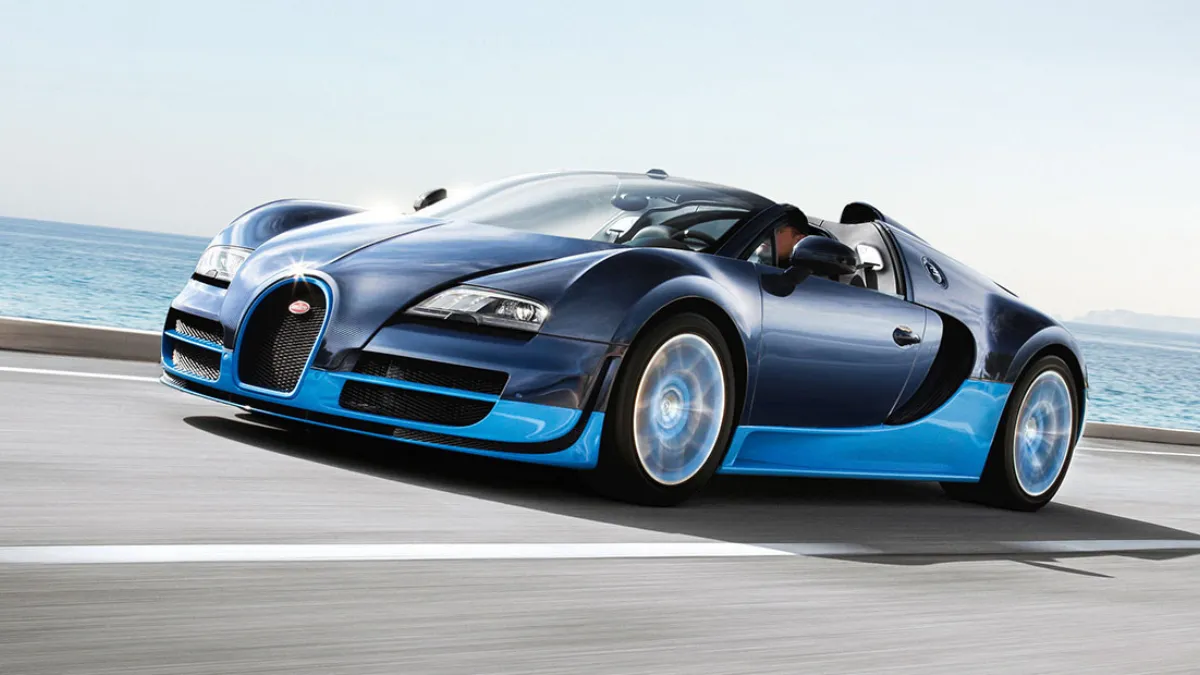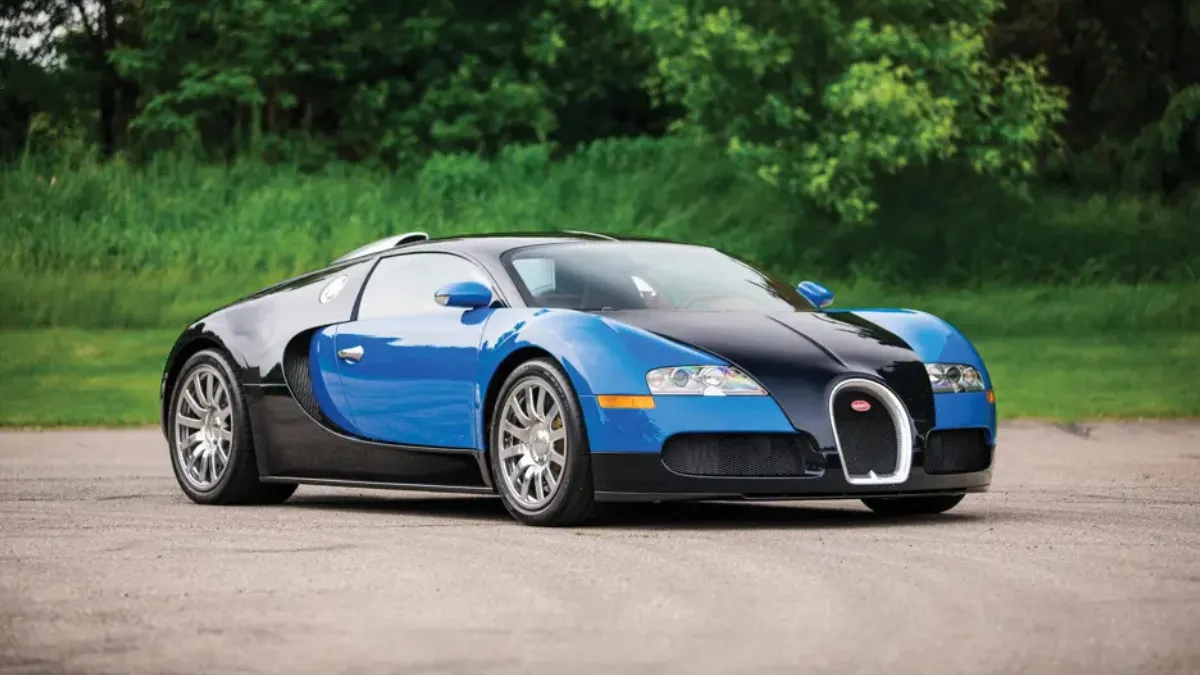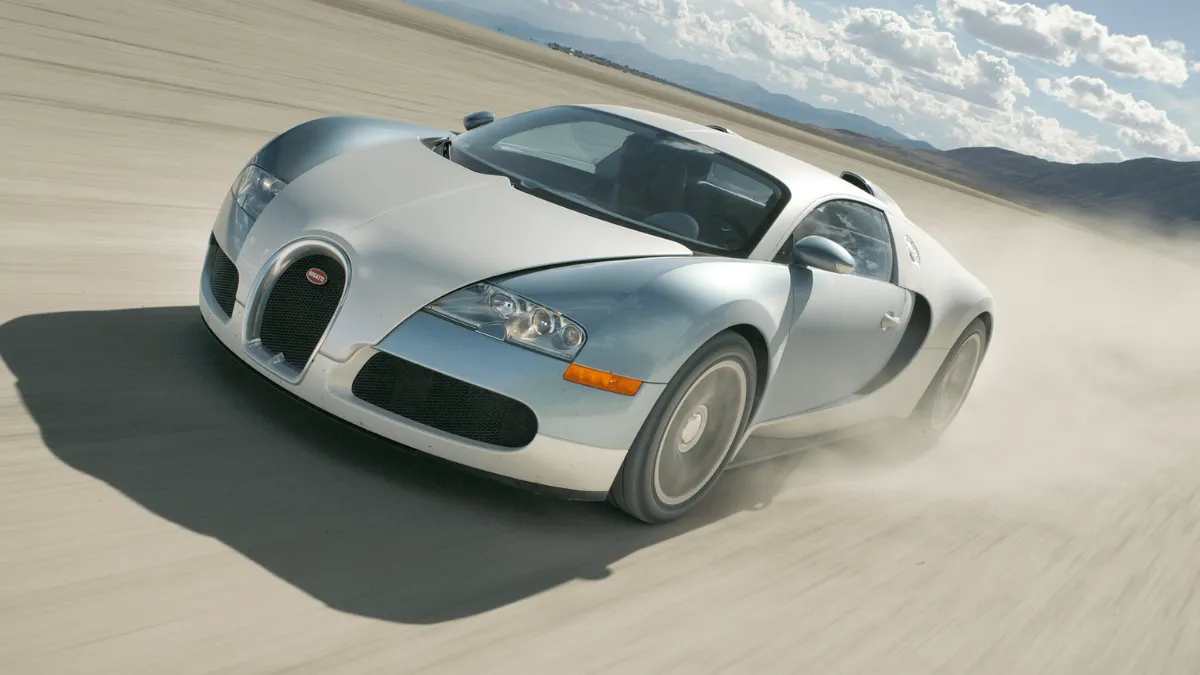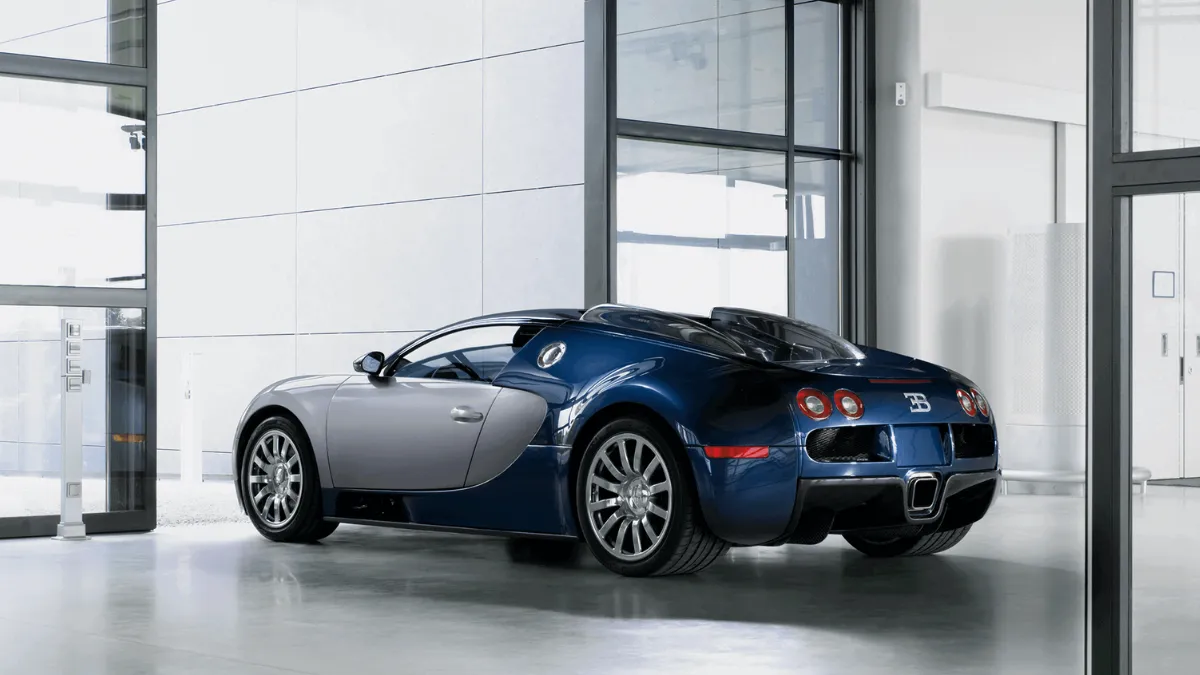The Bugatti Veyron, launched in 2005, continues to captivate automotive enthusiasts around the world. This hypercar redefined what a production vehicle could achieve, combining mind-blowing speed, luxury craftsmanship, and engineering audacity. Over two decades, the Veyron has become more than just a car—it is a symbol of innovation, ambition, and Bugatti’s commitment to pushing boundaries.
Record-Setting Specifications
From its inception, the Bugatti Veyron stunned the world. The car features an 8.0-liter quad-turbocharged W‑16 engine producing 1,001 PS (986 hp), capable of a verified top speed of 407 km/h (253 mph). Acceleration is equally breathtaking, with the Veyron reaching 0–100 km/h in approximately 2.5 seconds. At the time of its launch, it was the fastest production car globally, setting a new benchmark for hypercars.
The Veyron wasn’t just about raw speed; it showcased Bugatti’s engineering precision. Its all-wheel-drive system, seven-speed dual-clutch gearbox, and carbon-ceramic brakes ensured that this extreme performance remained manageable on regular roads. Even the cooling system, with over ten radiators, highlighted the technical challenges overcome to create such a masterpiece.
Limited Production and Price

Bugatti produced only 450 units of the Veyron, along with special variants, by 2015. Each car was priced at approximately $1.25 million, and the company reportedly incurred financial losses on every sale. This underscored Bugatti’s philosophy: the Veyron was never about profit—it was a statement, proving what was possible in automotive design and engineering.
A Name Steeped in Legacy
The Veyron was named in honor of Pierre Veyron, the French racing driver who won the 1939 24 Hours of Le Mans for Bugatti. For its 20th anniversary, Bugatti unveiled a special commemorative logo combining the French tricolor with Veyron’s signature, celebrating both heritage and innovation.
20th-Anniversary Celebrations
In September 2025, Bugatti marked the Veyron’s 20th anniversary with grand festivities in Alsace, France. Owners participated in a scenic driving tour called “Le Petit Tour” through the Vosges mountains, stopping at iconic landmarks such as Château du Haut-Barr and Villa René Lalique. A gala banquet featured operatic tributes to Ferdinand Piëch, the visionary behind the car. Molsheim’s streets saw a public parade of historic Bugatti models, while Milan hosted a nighttime parade of four Veyrons down Via Montenapoleone, merging automotive excellence with fashion glamour.
Bugatti executives emphasized that these celebrations were more than commemorations; they symbolized the enduring spirit of innovation and the Veyron’s transformative impact on the automotive world.
Origins: Piech’s Vision of the Impossible
The Veyron’s story begins with Prof. Dr. Ferdinand Piëch, Volkswagen Group chairman and grandson of Ferdinand Porsche. In the late 1990s, Piëch sketched the idea of a 1,000 PS, 400 km/h road car on a train. While engineers initially thought the concept was unrealistic, Piëch’s determination to break automotive boundaries drove the project forward.
After VW acquired Bugatti in 1998, Piëch oversaw concept studies like the EB118, EB218, EB 18/3 Chiron, and EB 18/4. These concepts ultimately culminated in the production Bugatti Veyron 16.4, unveiled at the 2005 Frankfurt Motor Show. The car embodied a rare combination of performance, luxury, and craftsmanship, demonstrating that a hypercar could deliver both extreme speed and everyday usability.

Engineering Marvel: W‑16 Engine and Performance
The Veyron’s quad-turbocharged 8.0-liter W‑16 engine remains one of the most remarkable feats in automotive engineering. Essentially two narrow-angle V8 engines coupled in a W configuration, it delivers 1,001 metric horsepower and over 1,250 Nm of torque. The performance was groundbreaking: 0–100 km/h in about 2.5 seconds and a top speed of 407 km/h. Later, the W16 Mistral variant achieved an astonishing 453.91 km/h as a roadster speed record.
Despite its performance, the Veyron remained surprisingly practical. Bugatti tuned it for comfort and drivability, making it “easy to live with” while still offering a record-breaking driving experience. Early high-speed tests presented challenges, including driveshaft failures at 223 mph, but meticulous engineering resolved these issues, setting new standards for street-legal hypercars.
Mixed Reception and Enduring Impact
Initially, the Veyron divided opinion. Its heavy weight of nearly 4,000 kg and focus on technical perfection diverged from traditional supercar principles. Critics like Gordon Murray, designer of the McLaren F1, viewed it as a “technical statement” rather than a driver-focused car. Yet, its dramatic performance won over enthusiasts, and over time, it became a cult icon.
Today, the Veyron is celebrated as an audacious engineering feat that launched the modern hypercar era. Top Gear dubbed it “Car of the Decade,” while Automobile magazine credited it with changing automotive standards. Volkswagen reportedly invested nearly $2 billion, demonstrating the project’s commitment to innovation rather than profit.

Auction Records and Collector Demand
The Veyron’s rarity and engineering prowess have made it highly desirable among collectors. In July 2025, a 2007 Veyron 16.4 sold at Goodwood’s Festival of Speed auction for £1,527,000 ($1.9 million), far exceeding estimates of £500–800k. Such auctions highlight the car’s lasting value, proving that even limited production runs can achieve legendary status.
Beyond the Veyron: Chiron, Mistral, and Future Hypercars
Bugatti’s commitment to innovation didn’t stop with the Veyron. Its successor, the Chiron (2016–2022), pushed power outputs even higher, while the W16 Mistral roadster (2022–2025) closed the W16 chapter with a speed record of 453.91 km/h. In 2024, Bugatti unveiled the Tourbillon, a 1775 bhp hybrid V16 hypercar, signaling the company’s transition to hybrid and electric technologies. Future models, including hybrid V8 hypercars based on Rimac technology, are set for 2026, continuing the Veyron’s legacy of merging extreme performance with luxury and design excellence.
Expert Reflections
Automotive insiders continue to admire the Veyron. Former Bugatti president Franz-Josef Paefgen recalled that engineers initially deemed the project “crazy,” but Piëch’s vision drove them to achieve the impossible. Critics who doubted the Veyron now recognize its unique personality, calling it “vanity engineering” that remains “cooler than ever” even after 20 years. Bugatti executives, including CEO Mate Rimac and President Christophe Piochon, affirm that the car’s engineering audacity and cultural impact define the brand’s identity and continue to inspire future models.
Also read: Acura ZDX EV Scrapped: Honda’s Shift and Its Implications for EV Buyers
Legacy and Cultural Icon Status
The Bugatti Veyron is more than a supercar; it is a cultural icon. Its 20th anniversary celebrations, record-breaking auctions, and continued reverence among enthusiasts demonstrate the lasting influence of this automotive marvel. From redefining performance standards to inspiring future hypercars like the Tourbillon, the Veyron’s legacy endures, proving that luxury and extreme speed can coexist seamlessly.
In two decades, Bugatti’s Veyron has shown the world that engineering audacity, meticulous craftsmanship, and unrelenting ambition can produce a car that is not only the fastest but also the most iconic in automotive history. Its story remains a testament to what happens when visionaries like Ferdinand Piëch challenge convention and redefine the limits of possibility.


















